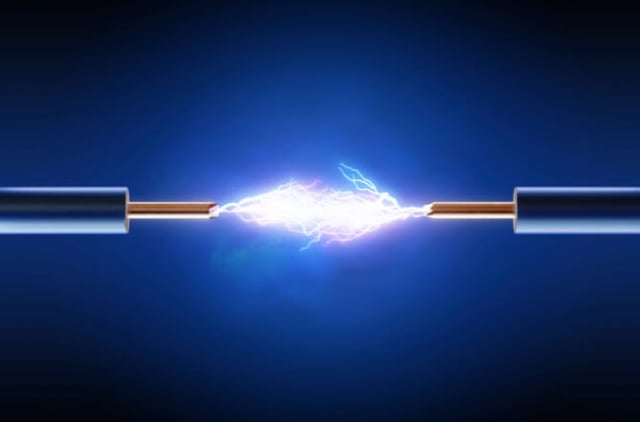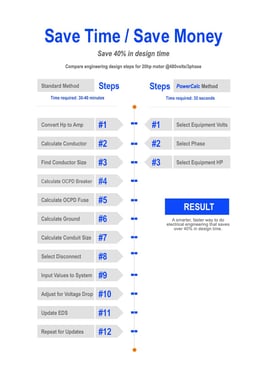September 19, 2017

Anatomy of a Conductor, Part 5: More on Branch Circuit Basics
This issue continues our series on the anatomy of a conductor. It is also a continuation of our discussion on the branch circuit conductor.
NEC 210.20 Overcurrent Protection requires branch circuit conductors and equipment to be protected as related to the load. Turning to NEC 240.4 Protection of Conductors also states requirements for the branch circuit as related to the conductor's ampacity specified in NEC 310.15, Tables 310.15(B)(16) - 310.15(B)(21) and Tables 310.60(C)(67) - 310.60(C)(86).
The rule is to protect the circuit conductor by applying a circuit breaker at the supply side of said circuit conductor with Trip Amp rating that is equal or less than said circuit conductor's rating. In the case of the motor circuit, this rule is reversed to allow the motor startup in-rush current to go through the OCPD without tripping and opening the circuit.
Where a circuit supplies only motor operated load, then Article 430 should be applied. An example, 5 HP Motor, 208 V, 3 phase, follows:
1. Circuit conductor rating = base current value (FLA) x 1.25 (NEC 430.22)
From Table 430.250, the 5 HP@ 208 V, 3 phase motor FLA = 16.7 Amps
Circuit Conductor Rating = 16.7 x 1.25 = 20.88 Amps
From Table 301.15(B)(16) select #10 Conductor 60 degrees Celsius
2. OCPD = Base current value (FLA) x 2.5 (NEC Table 430.52)
= 16.7 x 2.5 = 41.75 Amps
From NEC 240.6 Standard Ampere Rating select 405Amps
From the above equation, one can determine that Trip Amp setting of OCPD could be more than twice as much as the circuit conductor rating. This indicates that the conductor is NOT properly protected and could overheat under certain conditions such as motor overload or excessive voltage drop.
Where the circuit supplies only air conditioning equipment, then Article 440 should be applied.
Where the circuit supplying loads consisting of motor operating utilization equipment that is "fastened" in place and has a motor larger than 1/8 HP in combination with other loads, the base current shall be calculated as follows:
1.25% x the largest motor + the sum of other loads
Base current = 1.25 largest FLA + sum of other loads
In summary, the electrical professional should always specify the rating of the OCPD and the rating of the circuit conductor as a "pair". The circuit conductor rating is based on the load and the OCPD rating is based on the load type.
There are other factors that affect the conductor rating such as the ambient temperature and the number of conductors in a raceway. These factors will be discussed in future articles..

Save Time / Save Money
 PowerCalc automates the electrical design process.
PowerCalc automates the electrical design process.
It is well established that automation is the driver in our techcentric society and business world.
Automation drives productivity across all businesses large or small. Changes, even small ones, over time snowball into massive gains in productivity.
PowerCalc includes: automation of processes with databases, standards, and updated procedures resulting in fewer errors, fewer building department comments and fewer issues with finished designs. And, just less time spent on design and repetitive calculations.
To illustrate this point, we’ve put together the chart shown that focuses on design time. It shows how PowerCalc streamlines the design process to save days of engineering man hours. Save Time/Save Money.
Let me know what you think…sign up for our blog.

488 N. Federal Hwy, Boynton Beach, Florida 33435
(561) 278-9969
Inbound Performance Template by SmartBug Media. Copyright 2024.
All Rights Reserved
